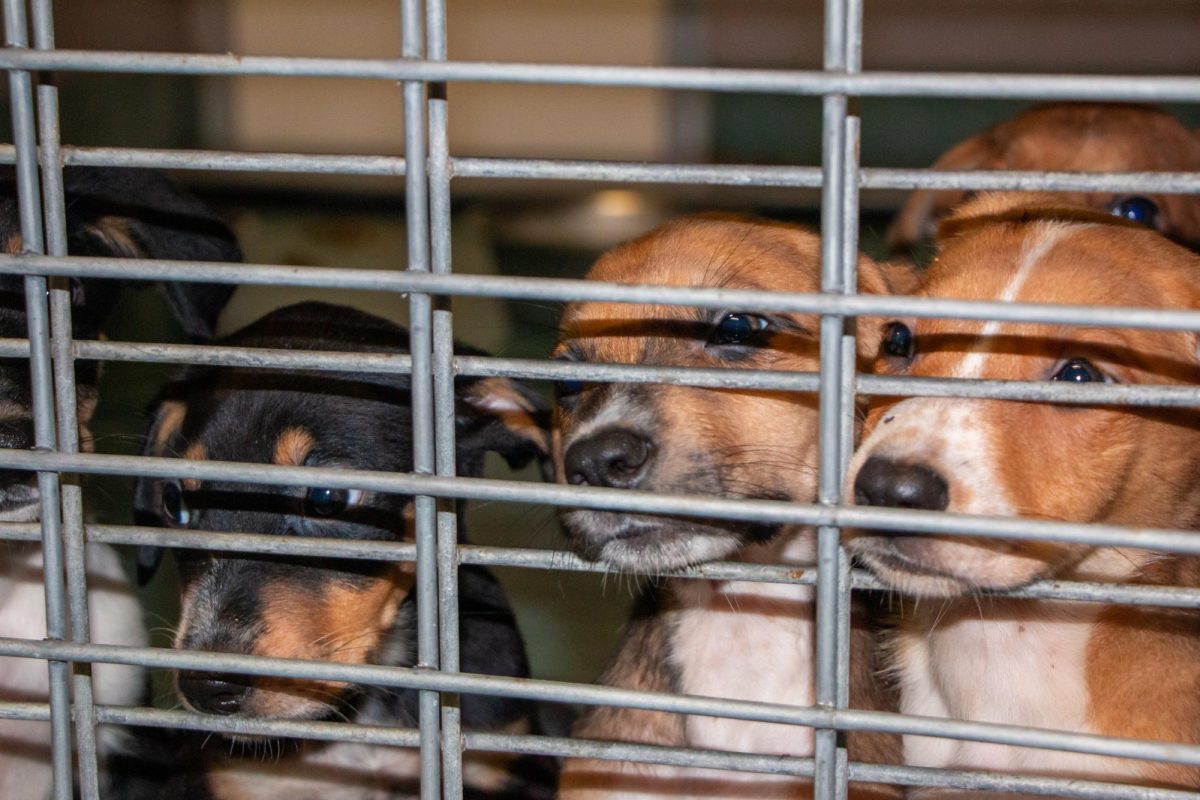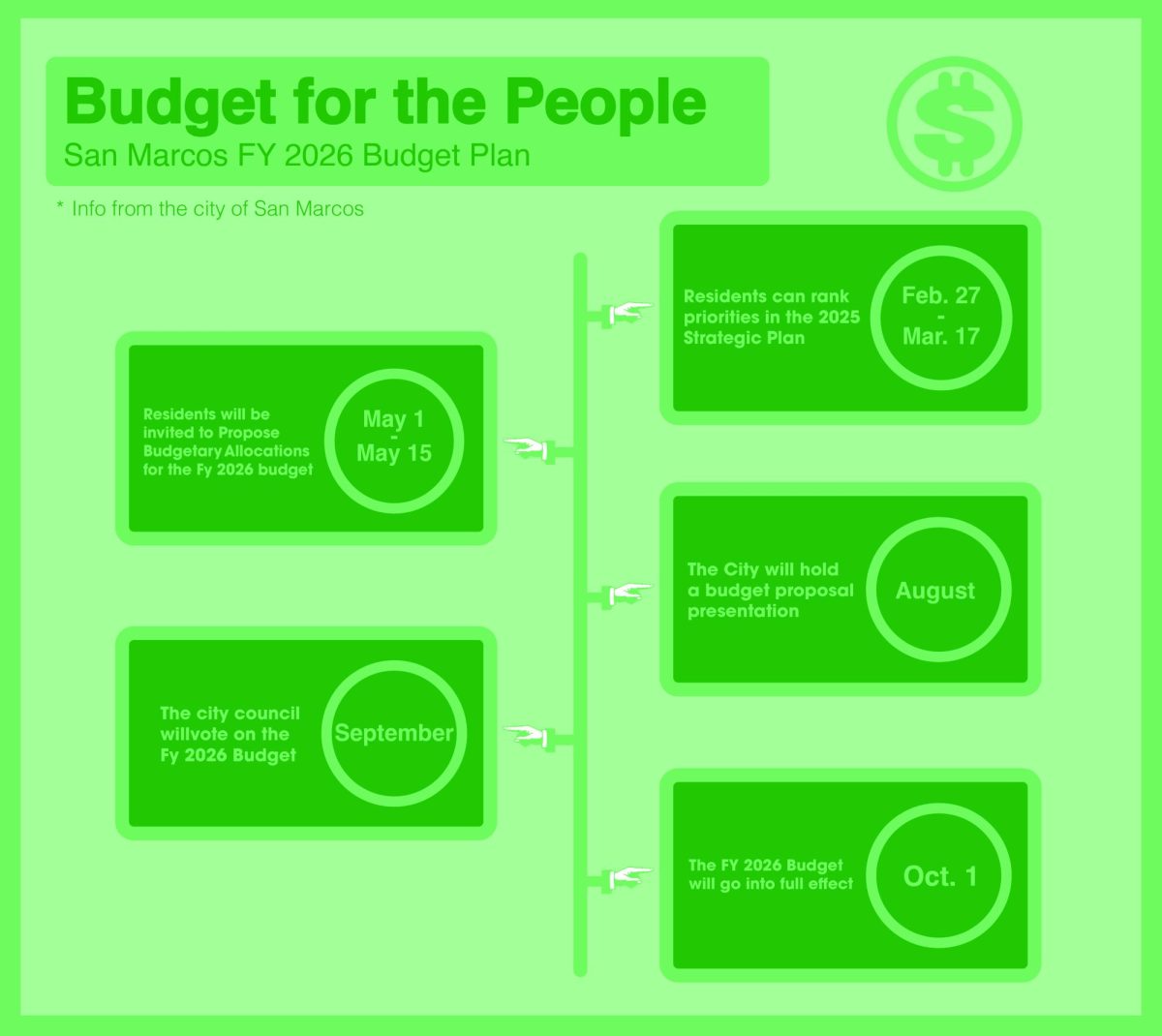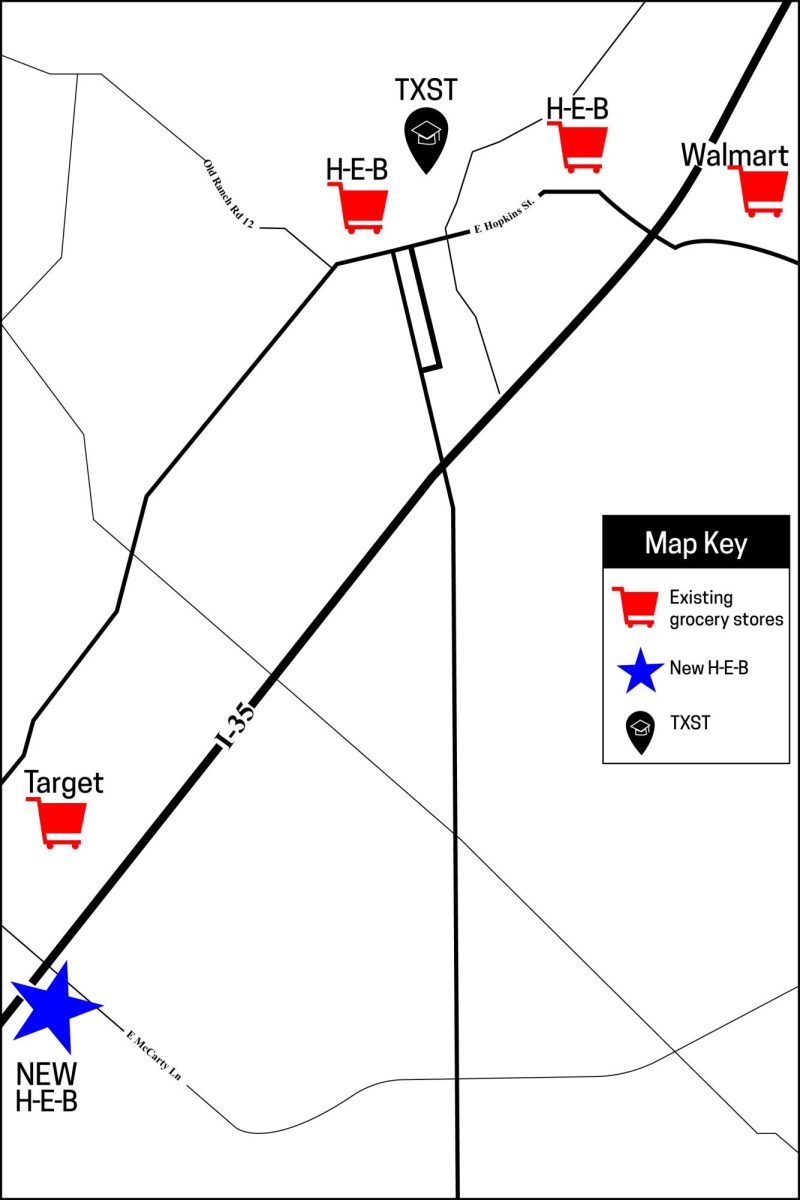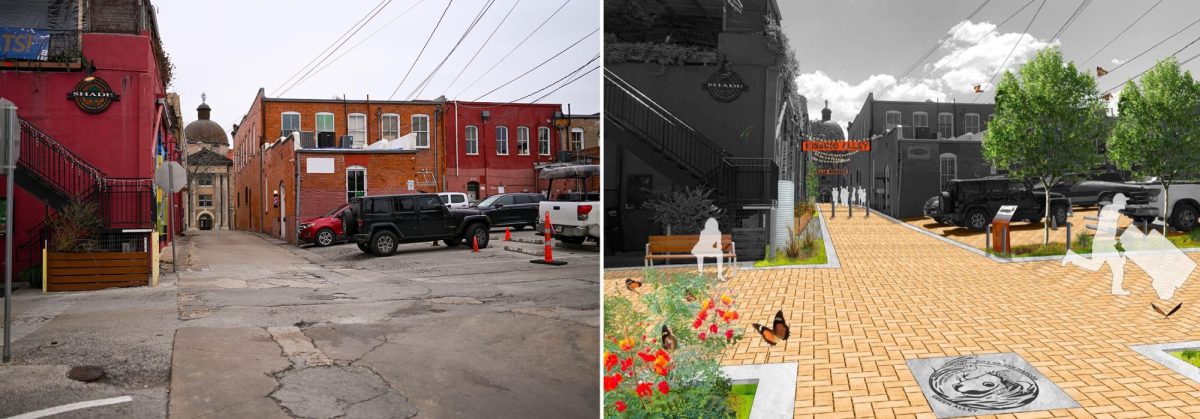The San Marcos Regional Animal Shelter continues to deal with overcrowding, operating above capacity since spring 2022, reflecting a broader overcrowding issue affecting Central Texas.
The shelter took in 3,700 animals from October 2023 to August 2024, a 13% increase from 3,267 intakes in fiscal year 2023, according to the city of San Marcos website.
Despite the overcrowding, the shelter had more live outcomes than live intakes for the first time in 2024 in August, with 402 animals entering and 418 leaving.
“We have been overcrowded for about two years,” Minnie Buckhaults, San Marcos Regional Animal Shlter’s community engagement coordinator said. “A lot of animals are coming in, but not as many are getting out, so we’ve slowly accumulated more and more.”
According to the Hays County website, the San Marcos Regional Animal Shelter is the only intake facility in Hays County, receiving 25 to 100 animals a week from every city in the county, according to Buckhaults.
The shelter started 2023 with 243 animals and ended with 251, showing no improvement in capacity.
“We’re starting to see an intake go back to what was normal before COVID-19, so that intake increase combined with the slowing down of adoptions has increased length of stay for animals in shelters,” Lee Ann Shenefiel, Hays County Pet Resources Center director and Austin Pets Alive! (APA!) executive advisor said.
According to Sydney Medina, veterinarian at the Animal Care Center of Hays County, overcrowding severely affects animals’ well-being, leading to behavioral issues like anxiety and increased reactivity, as well as physical problems, including lower immune function and a rise in infections.
“It’s crazy how much stress can impact the overall health of a pet, but if they’re all housed in one location… they’re all sharing germs back and forth,” Medina said.
Buckhaults said residents should consider alternatives before surrendering pets, such as seeking help from APA!, which offers medical assistance and rehoming services.
APA! partnered with Hays County in April 2023 to establish the Hays County Pet Resource, Education and Research Center, which provides temporary housing, low-cost veterinary care and financial assistance.
“What we do know is that more resources are needed by our community members, we need to increase access to affordable and accessible spay, neuter and veterinary services,” Shenefiel said. “We have certainly seen an increase in demand for those types of affordable resources.”
Both Shenefiel and Buckhaults agree that spaying and neutering can help address overcrowding. Hays County and San Marcos fund Pet Prevent a Litter (PALS) of Central Texas, which offers free and low-cost spaying and neutering along with other resources.
Medina said while there are many myths surrounding spaying and neutering, such as people believing it may change their pet’s personality, the Humane Society of the United States states dogs live longer and have less health complications when they’re spayed or neutered.
Besides adopting, Buckhault said students can help by fostering, volunteering, donating or spreading information through posts about the shelter on social media. The shelter has a Dog’s Day Out program where people can volunteer to take a dog on a “field trip” for a few hours to make sure they still get enrichment.
If students want a permanent pet and live in apartments, they may have to pay a one-time pet deposit or monthly pet rent as a part of their bill.
“It seems like we’re in this repetitive cycle of bad news about shelters… and I think sometimes that feels like there’s nothing you can do about it like you as an individual can’t impact that,” Shenefiel said. “We know what gets animals out of shelters… but we have to invest in those programs and resources to make that happen.”
For more information on San Marcos Regional Animal Shelter’s adoptable pets, visit its website






















